INTRODUCTION :
Quantum computers harness the principles of quantum mechanics to perform complex calculations at speeds unimaginable by classical computers. They represent a paradigm shift in computing capabilities, offering revolutionary potential for various fields such as cryptography, drug discovery, and artificial intelligence.

How Quantum Computer Is Unique And How Work ?
Quantum computers utilize quantum bits or qubits, which can exist in multiple states simultaneously, thanks to the concept of superposition. This unique characteristic allows quantum computers to process vast amounts of data in parallel, far surpassing the capabilities of classical computers. Moreover, quantum computers leverage entanglement, enabling qubits to be interconnected in ways that classical bits cannot, enhancing computational power exponentially. As a result, quantum computers have the potential to revolutionize industries and scientific research, paving the way for unprecedented advancements in technology and innovation. They have the ability to solve complex problems that are currently infeasible for classical computers to tackle efficiently. Quantum computers rely on principles of quantum mechanics, such as entanglement and superposition, to perform computations at incredible speeds. The field of quantum computing is still in its nascent stages, with researchers and companies worldwide racing to achieve quantum supremacy. As quantum computing technology continues to advance, it is anticipated to have a transformative impact on various sectors, from finance to healthcare and beyond. The development of quantum algorithms and error-correction techniques is crucial for harnessing the full potential of quantum computers in the future.
How Quantum Computer Work And The Quantum Physics Behind It?
At the intersection of science fiction and groundbreaking technology lies the realm of quantum computing, where the very fabric of reality is harnessed to perform calculations far beyond the reach of classical computers. Unlike traditional digital systems that rely on bits as the smallest unit of data, quantum computers rely on qubits, which operate under the strange and often counterintuitive laws of quantum mechanics. In this quantum world, a qubit can exist in a state of superposition, meaning it can represent both 0 and 1 simultaneously, unlike a classical bit, which can only be in one state at a time. This ability to explore multiple possibilities at once allows quantum computers to tackle complex problems in parallel, drastically reducing the time required for certain calculations. The power of quantum computing is further amplified by entanglement, a phenomenon where qubits, once linked, share information instantaneously, regardless of the physical distance between them. This enables quantum computers to work in unison, processing vast amounts of data simultaneously with unprecedented efficiency. Additionally, the principles of quantum interference are employed to amplify correct answers while canceling out erroneous ones, honing the computational process towards the most accurate solution. Central to the operation of quantum computers is the enigmatic behavior of quantum particles, which exhibit properties like wave-particle duality—where they can act as both waves and particles—and quantum tunneling, which allows particles to pass through barriers that would be impossible in classical physics. Despite the immense potential, building a quantum computer is fraught with challenges, particularly in maintaining qubit coherence. These delicate quantum states are easily disturbed by the environment, leading to decoherence, a phenomenon where quantum information is lost to the surrounding system. To overcome these obstacles, researchers are experimenting with various quantum technologies, such as superconducting qubits, trapped ions, and topological qubits, each offering a different approach to minimizing error rates and improving scalability. Though still in its early stages, quantum computing holds the promise to revolutionize fields from cryptography to artificial intelligence, unlocking new frontiers in problem-solving that were once thought to be insurmountable.
HIGHLIGHT POINT EXPLAINATION :
1. Qubits
A qubit (quantum bit) is the fundamental unit of information in quantum computing, analogous to a classical bit in traditional computers. However, while a classical bit can only represent one of two states—either 0 or 1—a qubit can exist in a superposition of both 0 and 1 at the same time. This property allows quantum computers to perform multiple calculations simultaneously, dramatically increasing their computational power for certain problems.

2. Superposition
Superposition is one of the key principles of quantum mechanics. It describes the ability of quantum systems, like qubits, to exist in multiple states at once. In the case of a qubit, instead of being purely in state 0 or 1, it can be in a combination of both states simultaneously. When a measurement is made, however, the qubit collapses into one of the two states, either 0 or 1, with certain probabilities. Superposition enables quantum computers to explore a vast number of potential solutions to a problem simultaneously.

3. Entanglement
Entanglement is another quantum phenomenon where two or more qubits become interconnected in such a way that the state of one qubit cannot be described independently of the state of the other, regardless of the physical distance between them. This phenomenon allows for the instantaneous transfer of information between entangled qubits, which plays a critical role in quantum computation and quantum communication. Entanglement is crucial for quantum parallelism, helping quantum computers solve problems much faster than classical ones.
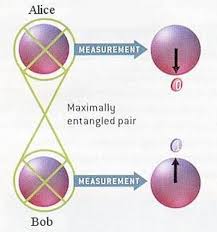
4. Quantum Interference
Quantum interference is a principle that explains how the probabilities of different quantum states can combine and cancel out. In quantum computing, when qubits are in superposition, their wavefunctions (mathematical descriptions of quantum states) can either reinforce each other (constructive interference) or cancel each other out (destructive interference). By carefully manipulating these interference effects, quantum algorithms are designed to amplify the probability of correct solutions while minimizing the probability of incorrect ones. This principle is fundamental to achieving the desired outcomes in quantum computations.
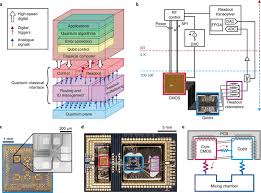
5. Wave-Particle Duality
Wave-particle duality refers to the concept in quantum mechanics that particles, such as electrons or photons, can exhibit both wave-like and particle-like behaviors depending on the experimental setup. In some situations, they act like waves, spreading out and interfering with each other, while in other situations, they behave as discrete particles. This duality is a cornerstone of quantum mechanics and is essential for understanding phenomena like interference and diffraction, which play a role in quantum computing and other quantum technologies.
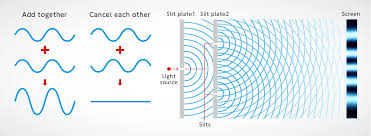
6. Quantum Tunneling
Quantum tunneling is a phenomenon where particles pass through energy barriers that they would not be able to surmount according to classical physics. In classical physics, if a particle doesn’t have enough energy to overcome a barrier, it simply cannot pass through it. In quantum mechanics, however, particles have a probability of “tunneling” through barriers, even if they don’t have enough energy to go over them. Quantum tunneling is used in some quantum computing models and is key in certain types of algorithms and computations that rely on finding solutions by “tunneling” through possible states.
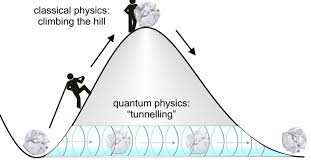
7. Decoherence
Decoherence refers to the loss of quantum coherence, meaning the qubits lose their quantum properties, such as superposition and entanglement, due to interaction with their environment. When qubits are disturbed by external factors like thermal fluctuations, electromagnetic radiation, or other environmental noise, their quantum states collapse into a definite classical state. This process hinders the performance of quantum computers, as it leads to errors in the computation. To achieve reliable quantum computations, overcoming decoherence is one of the biggest challenges in the field of quantum computing.

8. Superconducting Qubits
Superconducting qubits are a type of qubit based on superconducting circuits, which can carry an electrical current without resistance when cooled to very low temperatures. These qubits use the properties of superconductivity to represent and manipulate quantum states. Superconducting qubits are one of the most widely studied approaches in quantum computing because of their relatively easy scalability and the ability to perform fast quantum operations. Major quantum computing companies, like IBM and Google, use superconducting qubits in their quantum computers.

9. Trapped Ions
Trapped ions are atoms that are trapped using electromagnetic fields and used as qubits. The ions can be manipulated by lasers to encode and perform quantum computations. Trapped ion systems are highly accurate and can maintain their quantum states for relatively long periods, making them promising for building reliable quantum computers. These systems are particularly known for their precision and are being actively explored by companies like IonQ.
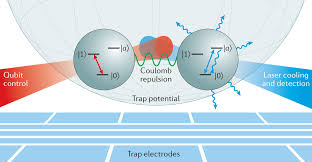
10. Topological Qubits
Topological qubits are a theoretical type of qubit that are based on the topology of quantum states, particularly using anyons—particles that exhibit non-trivial braiding properties. These qubits are immune to certain types of errors caused by noise and decoherence because their quantum state is encoded in the topology of the particle itself, making them more robust. While topological qubits are still largely theoretical and not yet widely realized in practice, they offer the potential for much more stable and error-resistant quantum computer.
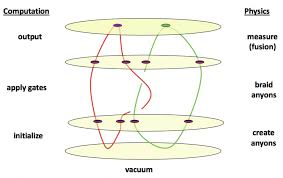
Why Quantum Computer Is Revolutionary And Where It Use?
Quantum computing isn’t just a faster computer. It’s an entirely new way of processing information—one that could reshape industries, solve problems once thought impossible, and redefine the limits of what technology can achieve.
At the core of quantum computing is the quantum bit, or qubit. Unlike a classical bit that exists as either a 0 or a 1, a qubit can exist in both states at once, thanks to a quantum property called superposition. When you combine that with entanglement, which links qubits so that the state of one affects another instantly, quantum computers can process massive combinations of data simultaneously.
In drug discovery, quantum computers can simulate molecular structures far more accurately than classical computers. This means we could find cures for diseases faster, develop personalized medicine, or even discover new materials with properties we’ve never seen before.
In finance, quantum algorithms might optimize portfolios and risk assessments in real-time, analyzing scenarios that would take traditional supercomputers years to model.
In cybersecurity, the flip side is that current encryption methods could become obsolete. Quantum computers could potentially break widely used cryptographic codes in minutes. But they could also lead to stronger, quantum-based encryption methods that are nearly impossible to crack.
And in climate modeling, quantum systems could analyze billions of variables—from ocean currents to carbon emissions—to help us make smarter decisions about the planet’s future.
Of course, we’re still in the early stages. Most quantum computers today are unstable, error-prone, and require extremely cold environments to operate. But the pace of progress is rapid. Companies like IBM, Google, and startups worldwide are racing toward what’s known as quantum advantage—the point where quantum computers outperform classical ones on useful tasks.
It’s a future where science moves faster, where complex problems are cracked more efficiently, and where the impossible starts to feel possible. While we’re not there yet, we’re on the path—and the implications are nothing short of revolutionary.
INTERNAL LINKS :
What Is Agentic AI:
https://techman.live/what-is-agentic-ai-and-how-it-different-from-chatgpt/
What Is Bunker Buster Boom:
https://techman.live/bunker-buster-bomb-the-nightmare-of-military-bunkers/
